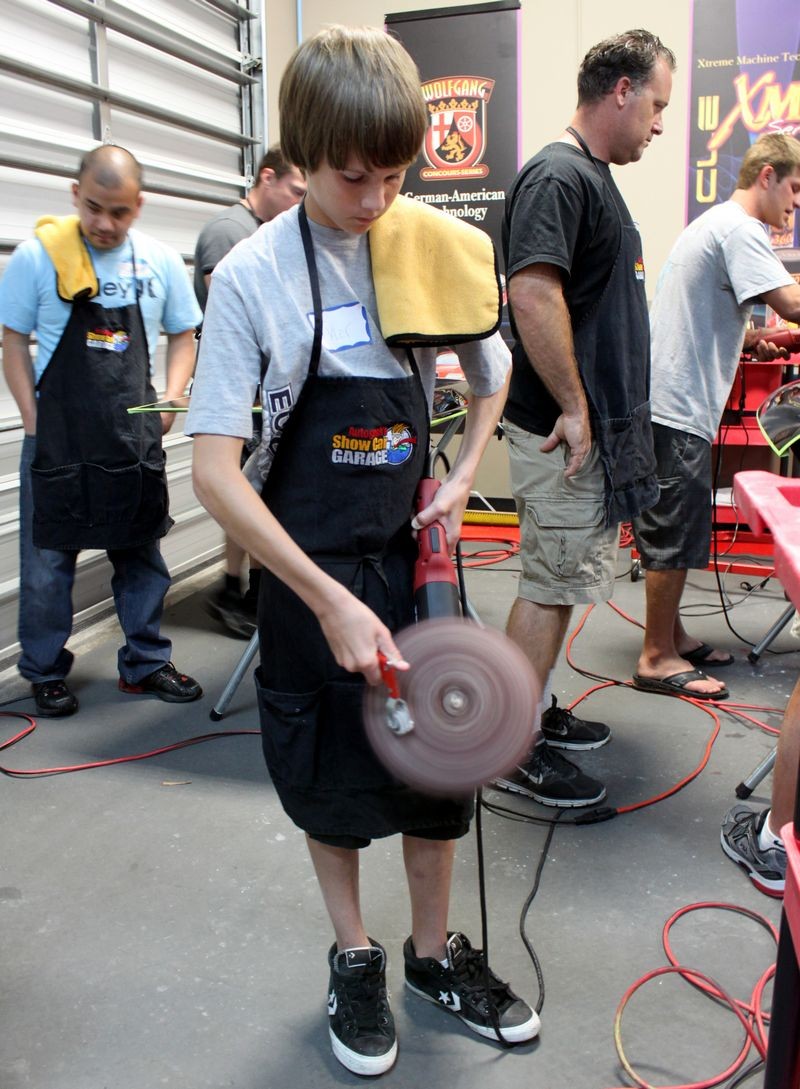Quote:
Originally Posted by route66mobiledetail

Here are my issues... Please help.........
1. When we got to the stern of the boat (scrubbing non skid), there were 2 fish boxes in the deck filled with ALL the accumulated water from cleaning the front of the boat, previous rainfall etc....
Is this a common thing to have to do?
I had to remove the water with a bucket that the customer had in the compartments.
I could have used my wet/dry vac but I didn't. There were drain holes in the compartments but they must have been clogged. I don't know! It took valuable time away from us actually cleaning the boat.
Do these things usually stay clogged up or should I have been able to find some sort of drain valve and released the water.
I've never had a boat so I legitimately don't know. Yet... Sorry if this sounds like a dumb question but.... I just need input.
|
It's one of three possibilities,
1. There would be a drain plug and you would have to reach your hand into the water, locate it and remove it.
2. No drain plug and remove using a container so some sort.
3. Bilge pump that pumps the water out for you.
Sounds like it was option 2 for you.
Quote:
Originally Posted by route66mobiledetail

2. DWP849X... I used this polisher with a 1 step 3M cleaner wax due to my time constraint with my customers 6:15 PM boat sale prospect. With my inexperience, I may have used a compound then followed by a 1 step cleaner wax OR even polish then wax if I had the time.
Is the 3M Cleaner wax usually so hard to remove? My technique is needing some serious experience and training. I kept the polisher at about 1500. Too high? Too low? And... should I polish until the product turns to a light haze or...
|
All kinds of factors can make a cleaner/wax wipe off hard.
If the boat is severely oxidized then the cleaner/wax is mixing with the dead, oxidized gel-coat and it is this NEW SUBSTANCE you're trying to wipe off not just the cleaner/wax.
My guess is after you removed the oxidation and had a shiny surface, IF you then applied the cleaner/wax it would wipe off easy because the dead, oxidized gel-coat would have been already removed.
Sounds like a true compound would have been the optimum choice and it too probably would have wiped off somewhat hard with the oxidation level on the boat but that's the nature of the beast. Here's a tip, get a collection of terry cloth hand towels for wiping off compounds. They work better than soft, plus microfiber towels which work better for wiping off polish and wax.
Also, buffing till the product is almost dry or just a haze means it's dry and "yes" it will be harder to wipe off.
The way you use a one-step cleaner/wax on anything and especially a surface in bad condition is to use the product, heavy or wet. This means use a LOT of product not a skimpy amount.
I cover all of this and so much more in my new boat detailing book that is weeks out from being ready for sale.
Also, I cannot stress enough how important it is to
CLEAN YOUR PADS OFTEN!
When you chopping hard on oxidized gel-coat you're going to have 2 things building up on your pad,
- Spent product
- Dead, oxidized gel-coat
If you don't clean your pad you're going to dilute the fresh product you use next because it will mix with the above two substance and it will create an even stickier or gummier residue to wipe off.
If buffing with a wool pad on a rotary buffer this means taking a steel pad cleaning spur to the face of the pad and doing this after every section you buff or ever other section you buff.
Lake Country Wool Pad Spur
Like this,


Quote:
Originally Posted by route66mobiledetail

Additionally the polisher was taking me for a ride (I'm not too proud so Ill admit that). I'm a 41 year old guy in good physical shape and it was running away at times like a novice motorcyclist handling the clutch for the first time.
|
- A clean pad helps a lot with controlling a wool pad on a rotary buffer.
- A stance where you have your feet planted shoulder's width with one just a little in front of the other.
- Holding the rotary buffer close to you chest instead of extended away from your body.
- Buffing with only the edge of the pad instead of buffing flat.
- A dry pad versus a wet pad is also easier to control, this comes back to cleaning the pad often.
Again, I cover all of the above in my new how-to book.
Quote:
Originally Posted by route66mobiledetail

I'm not expecting anyone to answer all my questions. Any nugget of advice will help.
|
Hope you found more answers here in this thread on this forum than anywhere else you may have searched for help.
I have nothing against Facebook but it's really difficult to type out and share the above type of in-depth answers in a tiny little message box and other
boat detailing forums usually just get you
one-liner replies.

Quote:
Originally Posted by route66mobiledetail

Overall the boat came out ok considering the original condition and time I had to do the job.
|
I'm confident of that!
